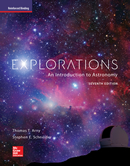1 2 3 4 5 6 2 in the atmosphere, and the ability to retain an atmosphere, make an argument as to whether Mars or Venus would be easier to "terraform" into a condition suitable for colonization (by introducing organisms that would use carbon dioxide to photosynthesize oxygen).7 3 less than Earth or Venus.8 9





